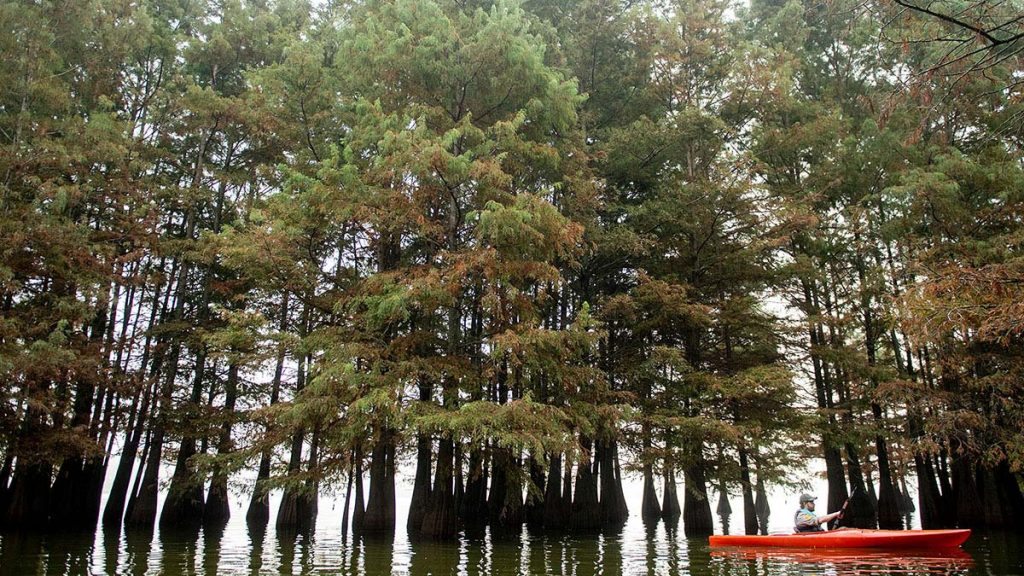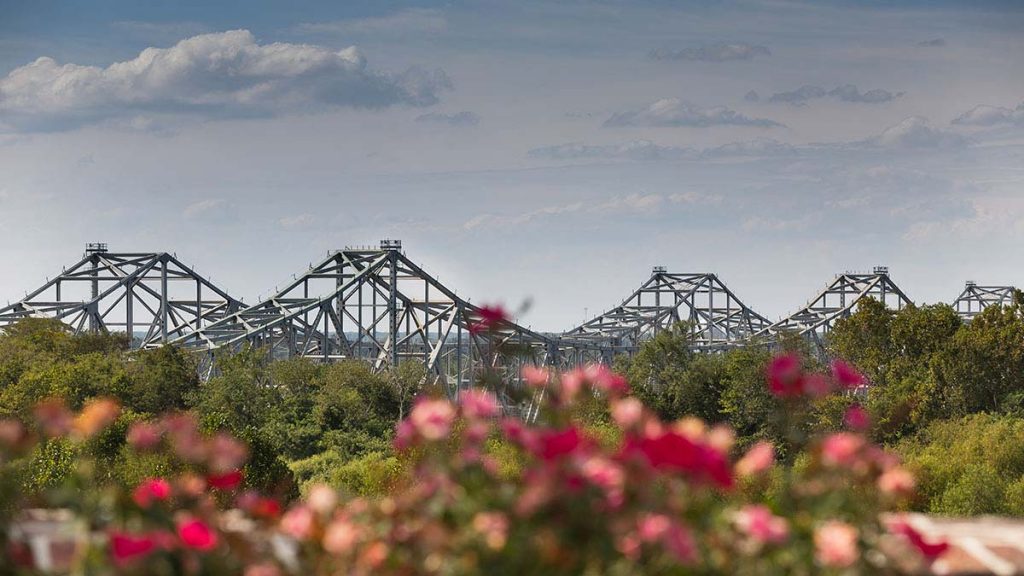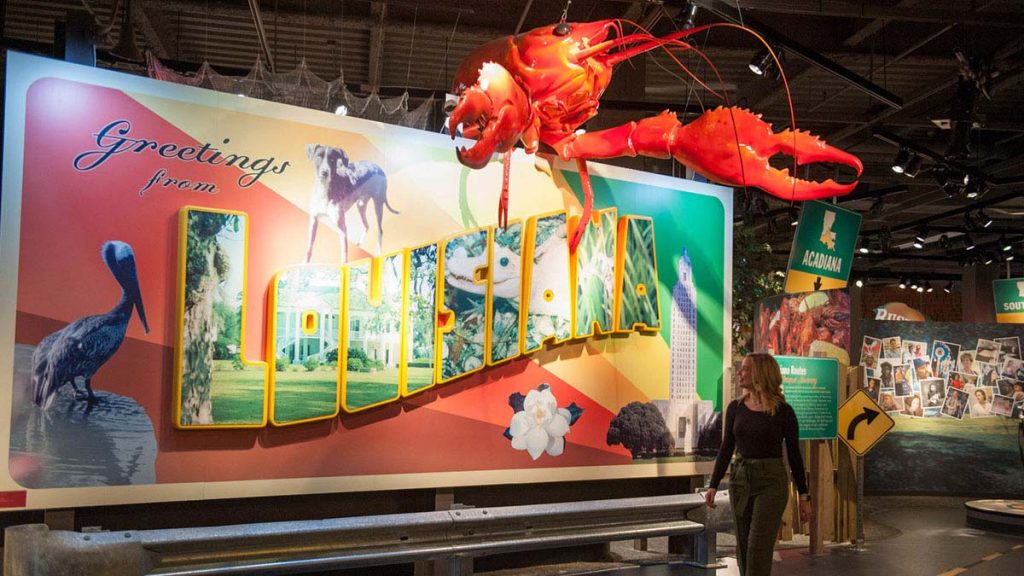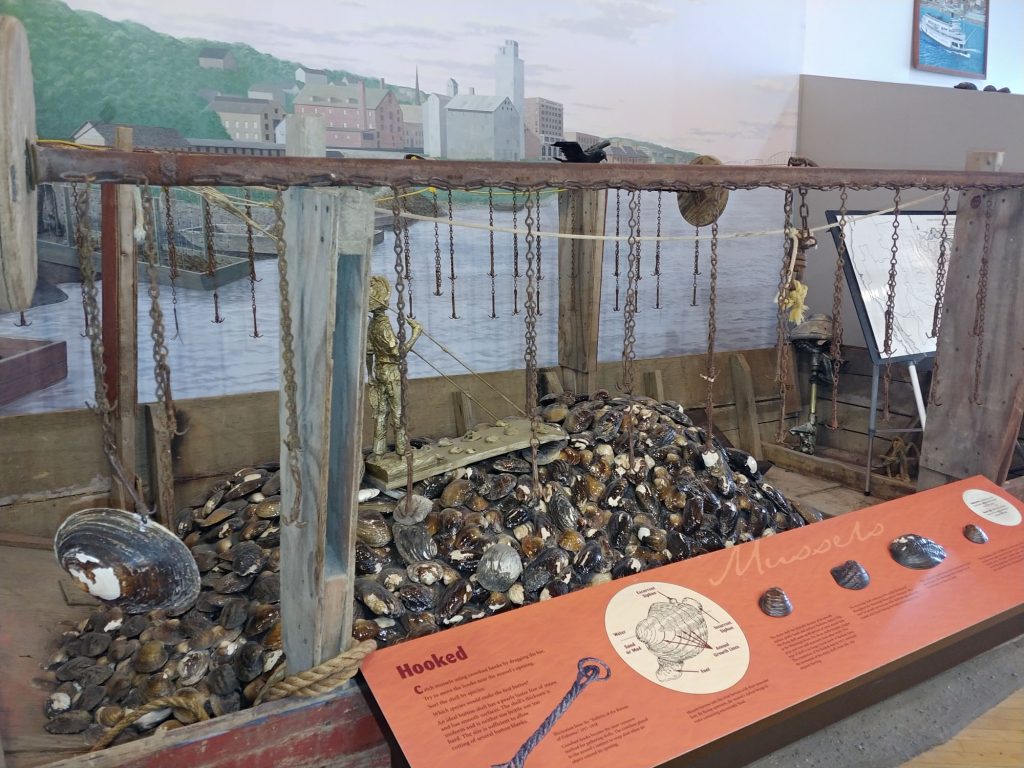The southern Mississippi River states offer a wide range of experiences and places to visit, from tours of important sites in the Civil War and the Civil Rights movement to iconic music venues and attractions. This five-day itinerary will take you along the Great River Road in five states—Kentucky, Tennessee, Arkansas, Mississippi, and Louisiana—and highlight some of this All-American Road’s top offerings.
Day 1 – Memphis
Start your trip in Memphis, Tennessee, where you’ll discover outstanding live music, tons of interesting attractions, fabulous dining, and so much more.
Spend the day visiting Memphis’ iconic musical attractions, including Elvis’ Presley’s Graceland (an entertainment complex where you can tour of the King of Rock’ n Roll’s home, visit his grave, and discover countless items of Elvis memorabilia), Sun Studio (where Elvis and other iconic artists recorded), the Stax Museum of American Soul Music, the Memphis Rock ‘n’ Soul Museum, and more.
History buffs shouldn’t miss the National Civil Rights Museum, located at the former Lorraine Motel, which features interactive exhibits and a massive collection of historic objects that tell the story of the American Civil Rights movement.
If you’re looking to get outside, you can explore unique outdoor attractions like Shelby Farms Park (which spans 4,500 acres and boasts 10+ miles of trails and its own herd of bison) and Big River Crossing (the longest public pedestrian bridge across the Mississippi).
After a day of exploring, head to the Beale Street entertainment district to take in a live show at iconic venues like B.B. King’s Blues Club, Alfred’s Restaurant and Bar, and Tin Roof.
Day 2 – Kentucky and Arkansas
In the morning, explore more of the Memphis attractions you might have missed or grab a bite to eat at one of the city’s amazing breakfast spots and hit the road for a day of adventure.
Head north from Memphis into Kentucky and explore historical sites like Columbus-Belmont State Park (140 miles, 2:45) or Wickliffe Mounds State Historic Site (155 miles, 3 hours). Columbus-Belmont State Park is the site of a Civil War fortification built by the Confederates and later occupied by Union forces. Wickliffe Mounds is an archaeological site that was home to a Native American village from 1100 to about 1350 and still boasts impressive earthen mounds today.
On your way back south, head west into Arkansas to find things to see and do along their section of the Great River Road. Stop by the Delta Gateway Museum in downtown Blytheville (100 miles, 2 hours from Columbus-Belmont State Park) to learn about the people and history of northeastern Arkansas. Find outstanding Delta scenery and great recreation options at Mississippi River State Park in Marianna (115 miles, 1:45 from Blytheville) or head to the Delta Cultural Center in Helena (140 miles, 2:15 from Blytheville to learn all about the Mississippi River Delta in Arkansas.
Head back across the river into Clarksdale to spend the night and get ready to explore music history in Mississippi’s Delta region.
Day 3 – Clarksdale to Natchez
Clarksdale in northwestern Mississippi is “the Home of the Blues,” and it certainly lives up to that name. Here, you can explore unique attractions like the Delta Blues Museum, which boasts a massive collection of memorabilia from blues legends, and the famed “Devil’s Crossroads,” where a young Robert Johnson reputedly sold his soul to the Devil for his unnatural musical talent.
Music lovers will find live blues music 365 nights a year in Clarksdale’s clubs and juke joints. Catch a blues legend or up-and-coming act at iconic venues like the Ground Zero Blues Club, Red’s Juke Joint, the Bad Apple Blues Club, and the Shack Up Inn.
From Clarksdale, continue your trip south to Cleveland, where you’ll find the GRAMMY Museum Mississippi (40 miles, 40 minutes from Clarksdale), home to unique interactive exhibits and an outstanding collection of instruments, outfits, and more from performers across the music spectrum. A short drive from Cleveland is Indianola, home to the B.B. King Museum & Delta Interpretive Center (25 miles, 35 minutes), which tells the story of King’s life and career.
Next, follow the Great River Road to Vicksburg (100 miles, 1:45). Vicksburg National Military Park commemorates the site of one of the most important battles of the Civil War—it includes the largest burial site for Union soldiers and sailors, as well as historic monuments, a cannon display, battle fortifications, and more. Vicksburg is also home to the Lower Mississippi River Museum, which features exhibits about the famous 1927 flood, a 1,500-gallon aquarium filled with native fish, and more.
From Vicksburg, head to Natchez (75 miles, 1:30) and get ready for the rest of your trip.
Day 4 – Natchez to New Orleans
Natchez is one of the oldest cities in Mississippi and home to one of the largest collections of historic buildings in the country. Historic homes like Auburn, Magnolia Hall, Stanton Hall, and the unfinished Longwood, are all open for tours, and Natchez is also the starting point of the Natchez Trace Parkway, which spans roughly 450 miles from Natchez to Nashville, Tennessee.
Spend time exploring Natchez’s historic, walkable downtown or hit the road again and head south to Baton Rouge (90 miles, 1:45), Louisiana’s capital city. Along the way, stop by The Myrtles in St. Francisville, which is known as one of America’s most haunted homes and offers daily tours. In Baton Rouge, take in the unique architecture of Old State Capitol, which is a National Historic Landmark, or tour historic buildings at the LSU Rural Life Museum & Windrush Gardens. Baton Rouge is also home classic Cajun and Creole cuisine, festivals, arts & culture, and lots more.
End the day by heading southeast to New Orleans (80 miles, 1:30).
Day 5 – New Orleans
There’s no better way to end a trip through the South without spending some time in New Orleans. Whether you’re visiting historic attractions like the French Market or the National World War II Museum, enjoying world-class cuisine in the city’s restaurants, or discovering live music in the French Quarter or Frenchmen Street, you’ve got lots of opportunities for fun in the Crescent City.
Jean Lafitte National Historic Park & Preserve has several units throughout south Louisiana in New Orleans and beyond, including the 23,000-acre Bataria Preserve; Chalmette Battlefield, the site of the Battle of New Orleans; and three sites dedicated to Cajun culture and traditions. The Historic New Orleans Collection is a complex of French Quarter buildings that boasts an impressive collection of artifacts and exhibits about New Orleans’ history and culture.
(Photo: Jackson Square, New Orleans/Louisiana Office of Tourism)















